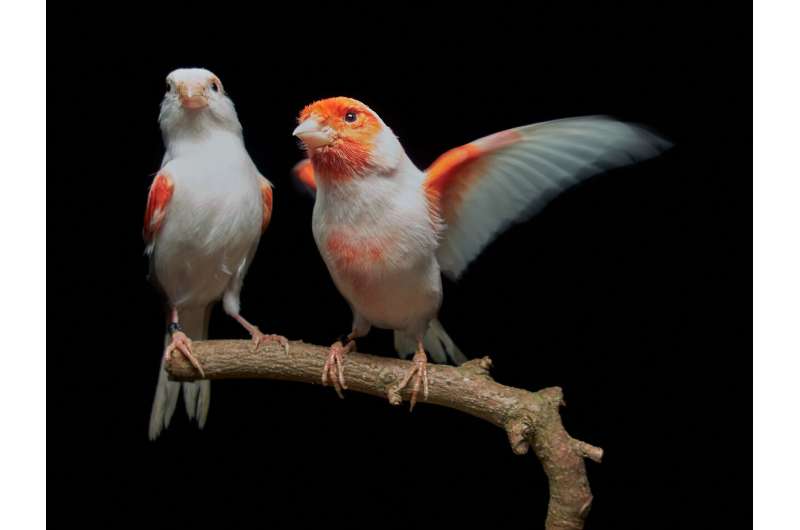June 12, 2020 report
Single enzyme responsible for gender-based plumage color differences in canaries

A team of researchers affiliated with multiple institutions in Portugal and the U.S. has found that a single enzyme is responsible for gender-based plumage color differences in mosaic canaries. In their paper published in the journal Science, the group describes narrowing their search for the factors involved in gender-based color differences in canaries and what they found. In the same journal issue, Nancy Chen with the University of Rochester has published a Perspective piece detailing the history of the study of gender-based color differences in birds, and outlines the work by the team in this new effort.
Scientists have known for quite some time that genetic factors play a role in plumage color differences in male and female birds—but the actual genetic mechanisms involved have been poorly understood. In this new effort, the researchers set out to learn more about the process by cross-breeding canaries and studying their genes.
The researchers studied red siskin canaries and common canaries. Red siskin have sexual dichromatism while male and female common canaries are the same color. The offspring produced when they are cross-bred are called mosaic canaries. The birds were cross-bred to help the researchers pinpoint the genes that are involved in producing gender specific plumage color differences—mosaic canaries are dichromatic. The researchers then repeatedly cross-bred mosaics with common canaries to narrow down the gene possibilities.
They further narrowed the list of possibilities by studying gene expression patterns in the offspring. This approach allowed them to narrow down the list of possibilities until just one gene remained: BCO2, which codes for the production of the enzyme β-carotene oxygenase 2. It was found to play a role in breaking down reddish-orange pigment β-carotene, which produces color in bird feathers. The difference between the male and female mosaics, the researchers found, was the amount of enzyme β-carotene oxygenase 2 produced. Thus, females had less color because more of their reddish-orange pigment β-carotene was broken down, leaving less for feather coloring. They suspect that estrogen may play a role in BCO2 expression, which would explain the gender differences in plumage coloring.

More information: Małgorzata A. Gazda et al. A genetic mechanism for sexual dichromatism in birds, Science (2020). DOI: 10.1126/science.aba0803
Journal information: Science
© 2020 Science X Network



















